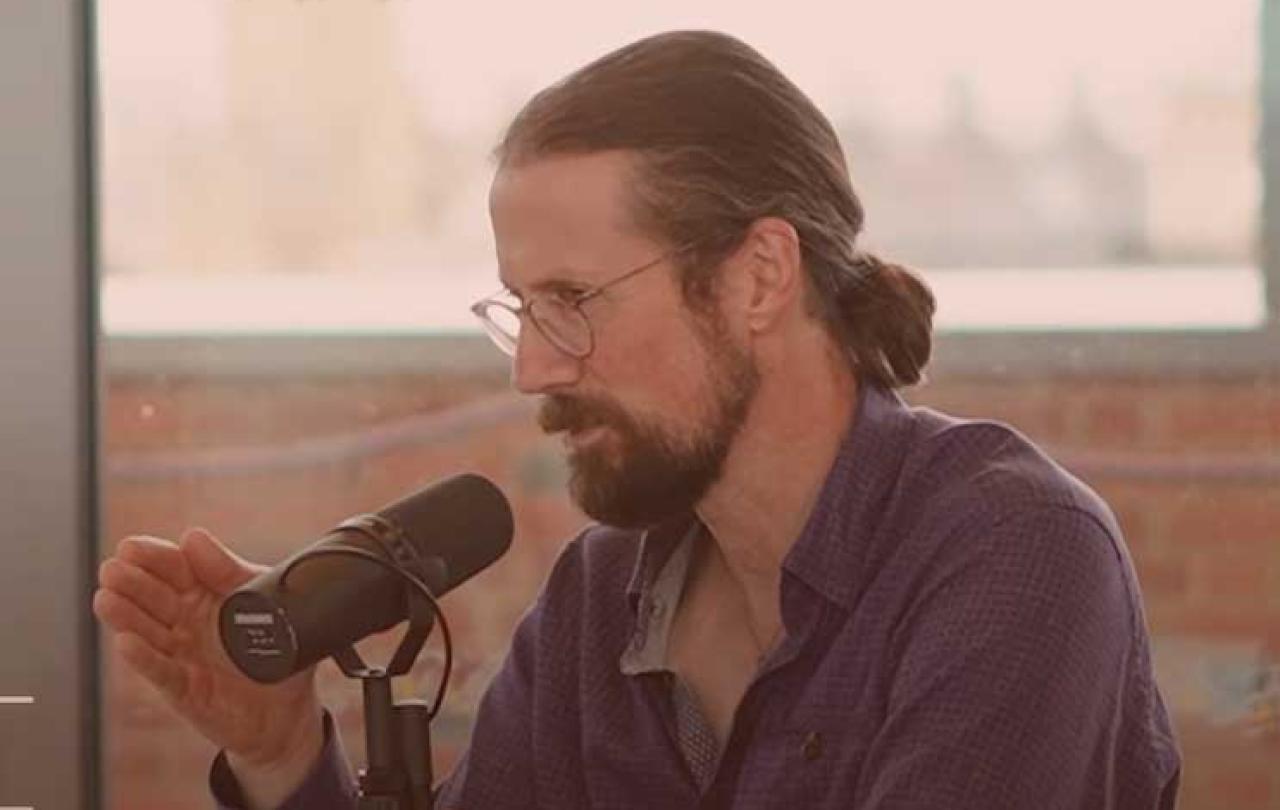
Listen now
Watch now
What would you get if you were to combine a weighty appreciation for the beauty and power of nature with an unexpected conversion to Orthodox Christianity, topped off with an unwavering aversion to smartphones?
Well, you would get something resembling a Paul Kingsnorth.
Paul is an award-winning poet and a best-selling author of both fiction (including the Buckmaster Trilogy: Wake, Beast and Alexandria) and non-fiction (including Real England, Confessions of a Recovering Environmentalist and his ongoing Sub-Stack series: Abbey of Misrule). He is, and always has been, an advocate for treating the natural world as if it were far more than a machine to be used or a resource to be obtained. Such behaviour is, according to Paul, nothing short of sacrilegious. As well as an enchantment with what he can see and sense in the natural world, he also has a long-standing fascination with all things mystical. He is, much to my own delight, somewhat of a real-life Gandalf the Gray. If it were not for his London accent, he could easily belong in the pages of Tolkien’s literary world.
And just one final thing to note about Paul Kingsnorth, since 2021 he has been horrified to find himself a Christian.
‘…in the end I just thought oh, maybe I’m a Christian. Damn.’
Well, actually, that’s unfair of me to say. It’s obvious when talking to Paul that the horror quickly dissolved, and wonder and awe became its swift replacements. But nevertheless, initially he could have rivalled C.S Lewis for the title of ‘the most reluctant convert in all of England.’ As tempted as I am, Paul tells his own story so powerfully (both in his writing and in our conversation for the Re-Enchanting Podcast), that I shan’t even attempt to tell it for him here.
But what I will say, is that we need people like Paul: the eccentrics, the contemplatives, the fearful, the awe-filled, the critics, the mystics. They're essential.
The actress Jennifer Coolidge, in her Golden Globes acceptance speech for her (unforgettable) performance in the show White Lotus, paid tribute to its creator, Mike White. It was an oddly insightful tribute. She said,
‘if you don’t know about Mike White, this is what you should know – he’s worried about the world. He’s worried about people. He’s worried about friends that aren’t doing well. He’s worried about animals…’
and she continued gushing in this vein while the camera panned to Mike weeping in the audience.
As I was recording this particular episode of Re-Enchanting and listening to Paul talk, Jennifer’s speech kept playing in my mind. After approximately one hour in his company, I can’t claim to know Paul Kingsnorth well, but what I do know of him makes me want to pay a similar tribute:
‘if you don’t know about Paul Kingsnorth, this is what you should know – he’s worried about the world…’
And, just as Jennifer Coolidge seemed to be towards Mike White, I found myself profoundly thankful that he is.
There was nothing nonchalant about our conversation with Paul, deep fascination seems to be his signature disposition towards most things, and perhaps therein lies the source of so much worry. When one is deeply fascinated or emotionally invested, assured of meaning, or perhaps even continually in awe of something; how can worry for its welfare not also be present? To worry about something is to care, it is to render it worthy of your worry, and Paul seems to render us all worthy of his. Why? Well, in his words, because
‘if God is an artist, which I think he is, then nature is his artwork. And we’re a part of it too, incidentally. We’re natural too.’
Therefore, the fact that we seem to have lost sight of this, and subsequently fractured our relationships with each other, with the natural world, and with God, is a crisis of the most spiritual proportions. And Paul cares.
I feel it is at this point that I must offer a disclaimer: my conversation with Paul Kingsnorth was a delight. It was, to borrow a familiar phrase, re-enchanting and I enjoyed it to no end.
While it is true that he leads us into some weighty topics (the terrors of AI, the disaster of being so divorced from the natural world, the problems woven into the very make-up of our society), he is a particularly enjoyable guide through what can be daunting landscapes. He may have an eye for detecting doom, but he seems to do so with a personable lightness. Like I say, he’s Gandalf, just without the staff.
It also helps that alongside a diagnosis, he so enthusiastically offers up what he believes to be a cure,
‘The more you have to answer these questions: what is a human? What is nature? What is the world? The more people will be ready for actual, serious, Christianity again. Full-strength Christianity. Not the weak version, the real thing. And I think that’s starting to happen, I can feel it.’
Paul’s episode of Re-Enchanting is well worth an hour of your time, his infectious fascination with all things nature is worth infinitely more.





